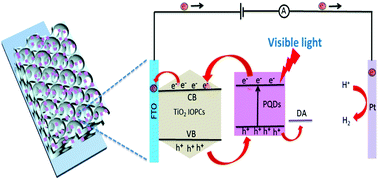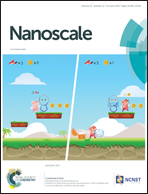All-inorganic perovskite quantum dot/TiO2 inverse opal electrode platform: stable and efficient photoelectrochemical sensing of dopamine under visible irradiation†
Abstract
CsPbX3 (X = Cl, Br or I) perovskite quantum dots (PQDs) have attracted tremendous attention due to their extraordinarily excellent optical properties. However, there is still an obstacle for their bio-application, which is limited by their water-instability. In this work, we have designed a novel visible light triggered photoelectrochemical (PEC) sensor for dopamine (DA) based on CsPbBr1.5I1.5 PQD immobilized three-dimensional (3D) TiO2 inverse opal photonic crystals (IOPCs). Supported by the TiO2 IOPCs, the water-stability of the PQDs as well as that of the PEC sensor was considerably improved. Furthermore, employed as a photoactive material in PEC sensor, CsPbBr1.5I1.5 PQDs can expand the photocurrent response of the PEC sensor to the whole visible region. In addition, the modulation of the photonic stop band effect of TiO2 IOPCs on the incident light and the emission of PQDs could further enhance the photocurrent response. Such a PEC sensor demonstrates sensitive detection of DA in phosphate buffer saline solution and serum, with a good linear range from 0.1 μM to 250 μM and a low detection limit of approximately 0.012 μM. Our strategy opens an alternative horizon for PQD based PEC sensing, which could be more sensitive, convenient and inexpensive for clinical and biological analysis.



 Please wait while we load your content...
Please wait while we load your content...